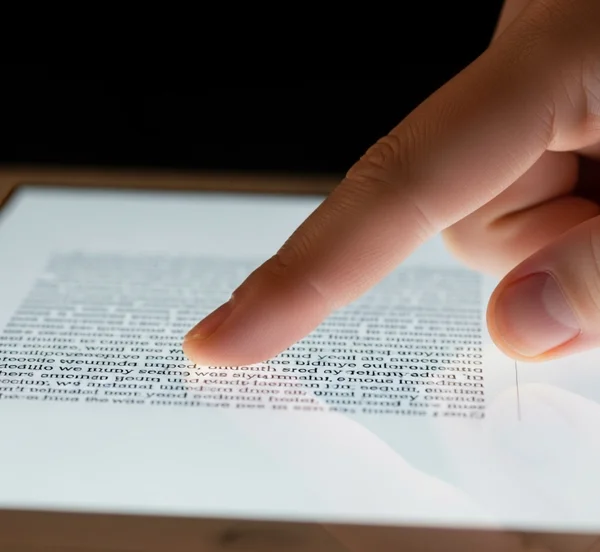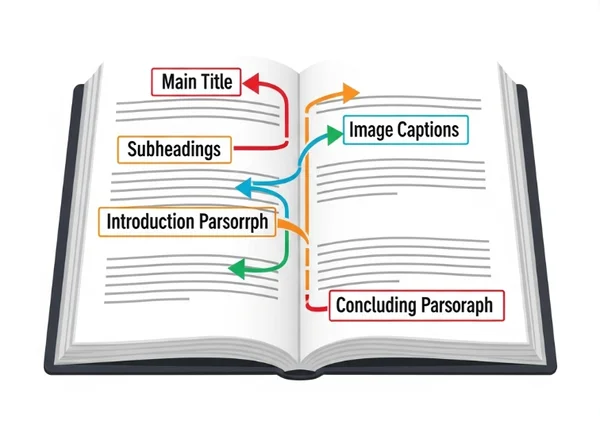10 Actionable Tips to Improve Your Reading Speed Today
Feeling overwhelmed by an ever-growing reading list? Wish you could absorb information faster and more efficiently? You're not alone. Many people are looking for ways to improve reading speed and boost their productivity. How can I improve my reading skills to not just read faster, but also retain more? The good news is that increasing your Words Per Minute (WPM) is an achievable goal with the right strategies. This guide offers 10 actionable read faster tips and speed reading techniques you can start implementing today. And remember, you can always check your reading speed to track your progress!
Foundational Habits for Faster Reading & Better Focus
Before diving into advanced techniques, let's establish some core habits that pave the way for fast reading and enhanced reading efficiency. How can you set the stage for WPM improvement?
Tip 1: Minimize Subvocalization (The Inner Voice)
What slows down reading speed for many is subvocalization – the habit of silently "saying" each word in your head as you read. While natural, it limits your reading speed to your speaking speed.
- How to do it: Try humming softly, chewing gum, or focusing on "seeing" blocks of words rather than "hearing" individual ones. Practice consciously pushing your pace slightly beyond comfortable speaking speed. This is one of the fundamental
ways to improve reading speed.
Tip 2: Create a Distraction-Free Reading Environment
Your ability to increase reading speed is significantly impacted by your surroundings.
-
How to do it: Find a quiet space, turn off notifications on your phone and computer, and let others know you need uninterrupted time. A focused mind is a faster mind. Good
reading habitsstart here.

Techniques to Increase Reading Speed: Training Your Eyes & Brain
Now, let's explore specific speed reading techniques to train your eyes and brain for faster processing. These are some of the most effective exercises to increase reading speed.
Tip 3: Use a Pacer (Your Finger or a Pen)
Using a visual guide can dramatically improve reading speed by creating a smoother, more consistent eye movement.
-
How to do it: Gently sweep your finger, a pen, or a cursor underneath the line of text as you read. Aim to keep your eyes slightly ahead of the pacer. This prevents your eyes from jumping back unnecessarily. It's a simple yet powerful
read faster tip.

Tip 4: Expand Your Visual Span (Chunking Words)
Instead of reading word-by-word, train your eyes to take in groups or "chunks" of words at each fixation point.
- How to do it: Start by trying to see two words at a time, then three, then more. Focus on the middle of a group of words. This reduces the number of eye movements (saccades) per line, directly contributing to
WPM improvement.
Tip 5: Reduce Regressions (Stop Re-reading)
Regression is the act of unnecessarily going back to re-read words or phrases you've already covered. It's a major speed bump.
- How to do it: Be conscious of this habit. Trust your brain's ability to pick up meaning on the first pass. Using a pacer (Tip 3) can also help prevent regressions. This is key among
speed reading techniquesforfast reading.
Smart Reading Strategies for Enhanced Speed and Efficiency
Beyond physical techniques, smart strategies can significantly boost your reading efficiency. How can you work smarter, not just harder, to increase reading speed?
Tip 6: Preview Material Before Diving In (Skimming & Scanning)
Get a sense of the text's structure and main ideas before you begin a detailed read.
-
How to do it: Quickly skim headings, subheadings, introductory and concluding paragraphs, and any bolded text or summaries. This primes your brain for the content, making it easier to process faster. This is a fundamental
reading skill.

Tip 7: Set Reading Goals and Time Yourself
Challenge yourself by setting specific WPM goals for your reading sessions.
- How to do it: Decide how many pages or chapters you want to read and in what timeframe. Use a timer. This creates a sense of urgency and helps you push your pace. You can use tools like our online reading speed test to establish a baseline.
Tip 8: Practice Consistently with Varied Materials
Like any skill, consistency is key to improve reading speed.
- How to do it: Dedicate time each day to practice these techniques. Read a variety of materials – books, articles, reports – to adapt your skills to different text types and complexities. This is essential
reading practice.
Advanced Tips for Sustained WPM Improvement
Ready to take your fast reading journey further? These advanced tips can help with long-term WPM improvement.
Tip 9: Improve Your Vocabulary Actively
A larger vocabulary means you'll recognize words faster and spend less time deciphering their meaning, which directly helps to increase reading speed.
- How to do it: Make a habit of looking up unfamiliar words. Use flashcards or vocabulary-building apps. The more words you know, the smoother your reading flow.
Tip 10: Track Your Progress with a Reading Speed Test
Regularly measuring your WPM and comprehension is crucial to see if these read faster tips are working and to identify areas for further improvement.
-
How to do it: Use a reliable
reading speed testlike ours at readingspeedtest.net. Test yourself weekly or bi-weekly under similar conditions to get consistent data on yourreading efficiency.
![]()
Important Note: Balancing Speed with Comprehension
While the goal is to improve reading speed, it should never come at the complete expense of understanding. How to read faster and retain more is the ultimate aim.
Why Faster Isn't Always Better Without Understanding
Reading quickly but not comprehending the material defeats the purpose. Always strive for a balance. If you find your comprehension dropping significantly as you try these speed reading techniques, slow down slightly until you find a comfortable pace that allows for both speed and understanding. Our reading speed test also includes a comprehension check for this reason.
Start Implementing These Tips and See Your Reading Speed Soar!
Improving your reading speed is a journey, not a race. By consistently applying these 10 actionable read faster tips and speed reading techniques, you can significantly increase reading speed and enhance your overall reading efficiency. Start with one or two tips that resonate most with you, practice them diligently, and watch your WPM climb. Remember to track your progress using tools like the reading speed test on readingspeedtest.net.
Which of these tips are you most excited to try? Or do you have other ways to improve reading speed that have worked for you? Share your thoughts in the comments below!
Your Questions on How to Read Faster Answered
-
How can I realistically increase my reading speed without losing comprehension?
The key is gradual implementation of
speed reading techniques. Focus on one or two tips at a time. For example, start by minimizing subvocalization or using a pacer. As you get comfortable, your brain will adapt to processing information faster while maintaining understanding. Always monitor your comprehension – ourreading speed testat readingspeedtest.net includes a comprehension quiz. If it drops, ease off the speed slightly. -
Are there specific exercises to increase reading speed?
Yes, many of the tips mentioned, like using a pacer, expanding your visual span (chunking), and reducing regressions, are essentially
exercises to increase reading speed. Timed reading drills, where you try to read a set amount of text within a specific time, also serve as good practice. -
How long does it take to see an improvement in WPM?
WPM improvementvaries per individual. With consistent practice (e.g., 15-30 minutes daily) of theseread faster tips, many people start seeing noticeable improvements within a few weeks. Significant gains might take a few months. Patience and consistency are crucial. -
Do these speed reading techniques work for everyone?
Most people can improve reading speed by applying these techniques. However, the degree of improvement and which specific
speed reading techniqueswork best can vary. It's important to experiment and find what suits your learning style and reading habits. -
Can I practice these tips on any reading material?
Yes, you can practice these
ways to improve reading speedon almost any material, from novels and articles to textbooks. Start with easier, more engaging texts to build confidence, then gradually move to more complex materials. Adjust your speed and focus on comprehension as needed depending on the text's difficulty.